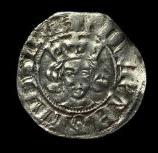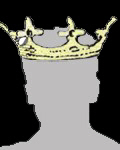








Designed by Nigel G Wilcox






The Paragon Of Metal Detecting
Powered By Sispro1
British Sterling Currency - Numismatics,
Florin
For Reference ONLY
Everything For The Detectorist
Florin



Edward III - 1327-1377 AD
This is the most famous gold coin of the Middle Ages, and may well have been used to pay Michelangelo for his famous statue of David. The Crusades promoted trade with the eastern Mediterranean, which brought enough gold into the flourishing trading city of Florence to enable it to start minting its own gold currency (1252). The obverse bears a lily, the city symbol of Florence, while on the reverse appears St John the Baptist, the patron saint of the city, in which not only trade and the money economy, but also the arts flourished as nowhere else. The name "florin" was also used for the British coin worth two shillings, or one-tenth of a pound, introduced in 1849 as a first step towards decimalisation. It survived, in many re-issues, until the decimal currency was finally introduced, over a hundred and twenty years later, in 1971.
Florin derives from the city of Florence (or Firenze) in Italy and frequently refers to the (fiorino) gold coin struck in 1252 .
This money format was plagiarized in other countries and the word florin is used, for example, in relation to the Dutch guilder (abbreviated to Fl) and the coin first issued in 1344 by Edward III of England , then valued at six shillings, composed of 108 grains (6.99829 grams ) of gold, and more recently relating to a British pre-decimal (later nickel silver ) piece also known as a two shilling 'bit' (abbreviation 2/-).
A silver coin of Florence, first struck in the twelfth century, and noted for its beauty. The name is given to different coins in different countries. The florin of England, first minted in 1849, is worth two shillings, or about 48 cents; the florin of the Netherlands, about 40 cents; of Austria, about 36 cents.
The florin was an English gold coin first minted by the statute of Edward III, containing one-fiftieth of a pound of gold and valued at six shillings. Half and quarter-florins were also minted, in proportion - a half-florin containg one hundreth of a pound of gold. The gold florins have long since been extinct.
Originally, a gold coin issued in Florence in the 13thC. In Britain, a silver florin - face value 10p (2s) - was first issued in 1849. The word 'florin' no longer appeared on these coins after 1936, although the denomination still exists in the form of the modern lop piece.
This is the most famous gold coin of the Middle Ages, and may well have been used to pay Michelangelo for his famous statue of David. The Crusades promoted trade with the eastern Mediterranean, which brought enough gold into the flourishing trading city of Florence to enable it to start minting its own gold currency (1252). The obverse bears a lily, the city symbol of Florence, while on the reverse appears St John the Baptist, the patron saint of the city, in which not only trade and the money economy, but also the arts flourished as nowhere else. The name "florin" was also used for the British coin worth two shillings, or one-tenth of a pound, introduced in 1849 as a first step towards decimalisation. It survived, in many re-issues, until the decimal currency was finally introduced, over a hundred and twenty years later, in 1971.
Florin derives from the city of Florence (or Firenze) in Italy and frequently refers to the (fiorino) gold coin struck in 1252 .
This money format was plagiarized in other countries and the word florin is used, for example, in relation to the Dutch guilder (abbreviated to Fl) and the coin first issued in 1344 by Edward III of England , then valued at six shillings, composed of 108 grains (6.99829 grams ) of gold, and more recently relating to a British pre-decimal (later nickel silver ) piece also known as a two shilling 'bit' (abbreviation 2/-).
A silver coin of Florence, first struck in the twelfth century, and noted for its beauty. The name is given to different coins in different countries. The florin of England, first minted in 1849, is worth two shillings, or about 48 cents; the florin of the Netherlands, about 40 cents; of Austria, about 36 cents.
The florin was an English gold coin first minted by the statute of Edward III, containing one-fiftieth of a pound of gold and valued at six shillings. Half and quarter-florins were also minted, in proportion - a half-florin containg one hundreth of a pound of gold. The gold florins have long since been extinct.
Originally, a gold coin issued in Florence in the 13thC. In Britain, a silver florin - face value 10p (2s) - was first issued in 1849. The word 'florin' no longer appeared on these coins after 1936, although the denomination still exists in the form of the modern lop piece.
Royal Monarchy
INFORMATION - DATA
Pages

Gold Florin 1344-1351




Florin Coinage, London Estimated Value £35
Edward III
We do NOT buy or sell coins
Copyright © All Rights Reserved by Nigel G Wilcox · · E-Mail: ngwilcox100@gmail.com
Main Coin Menu

VIEW ALL MENUS
Member NCMD
6. S. Menu
























